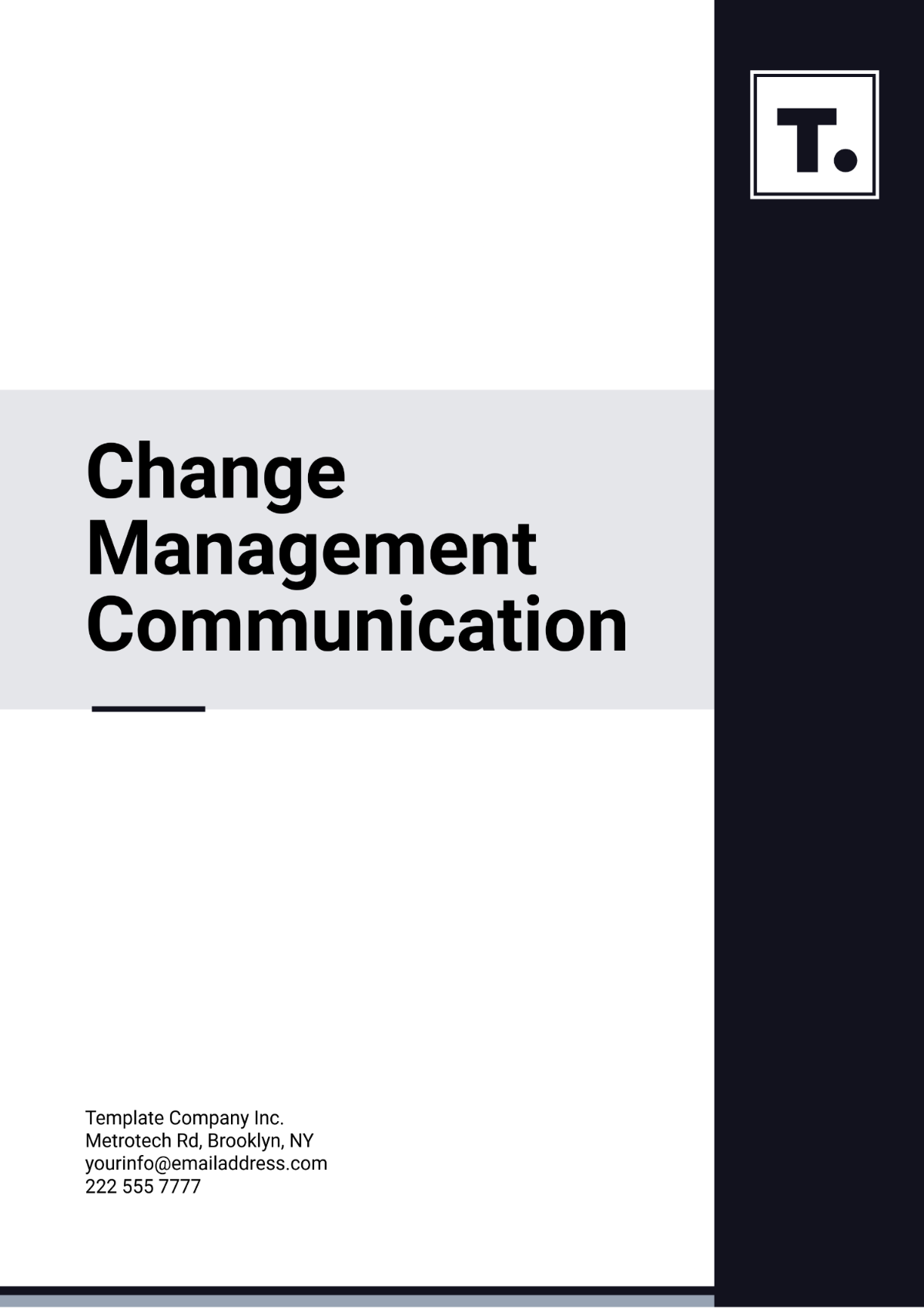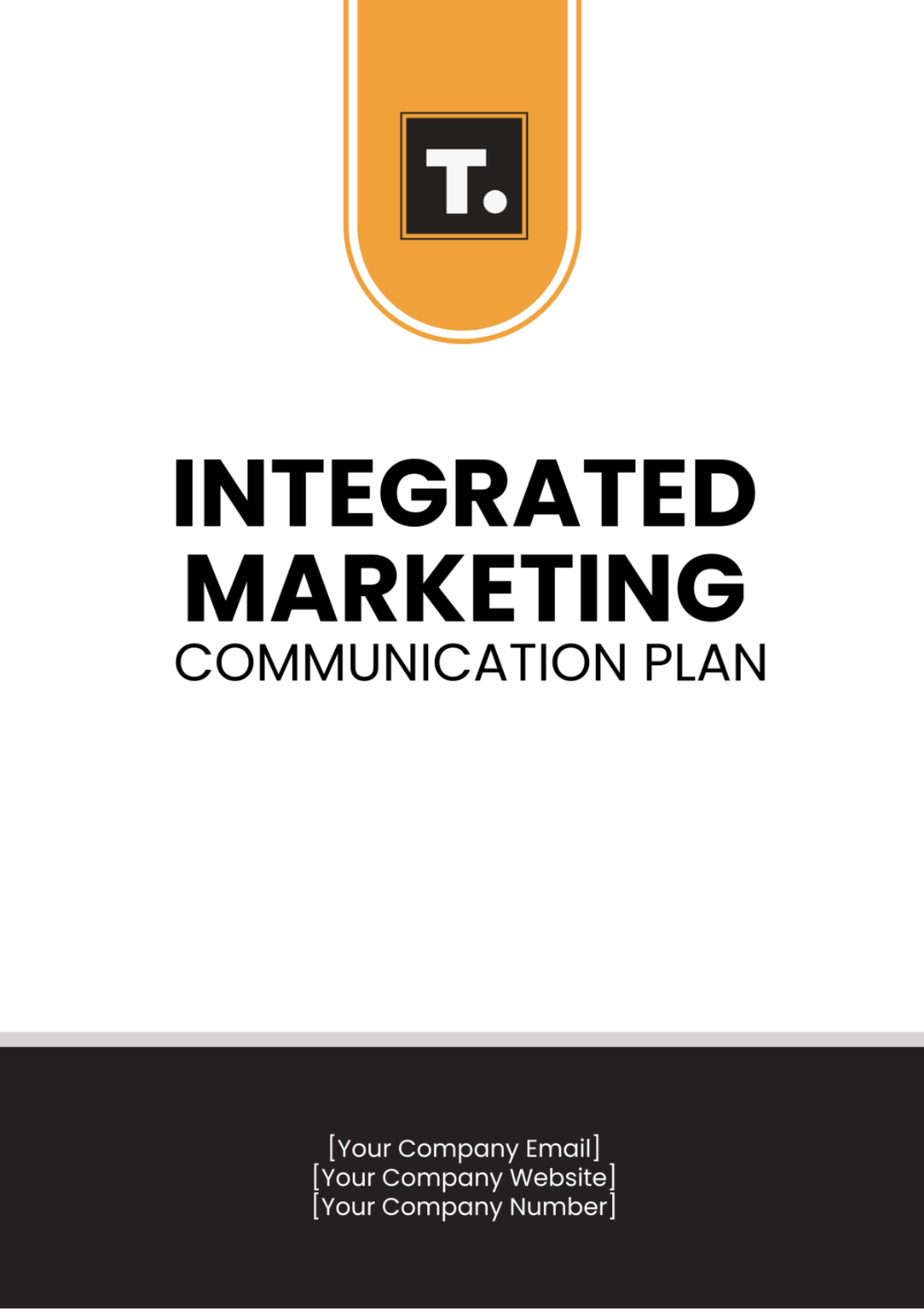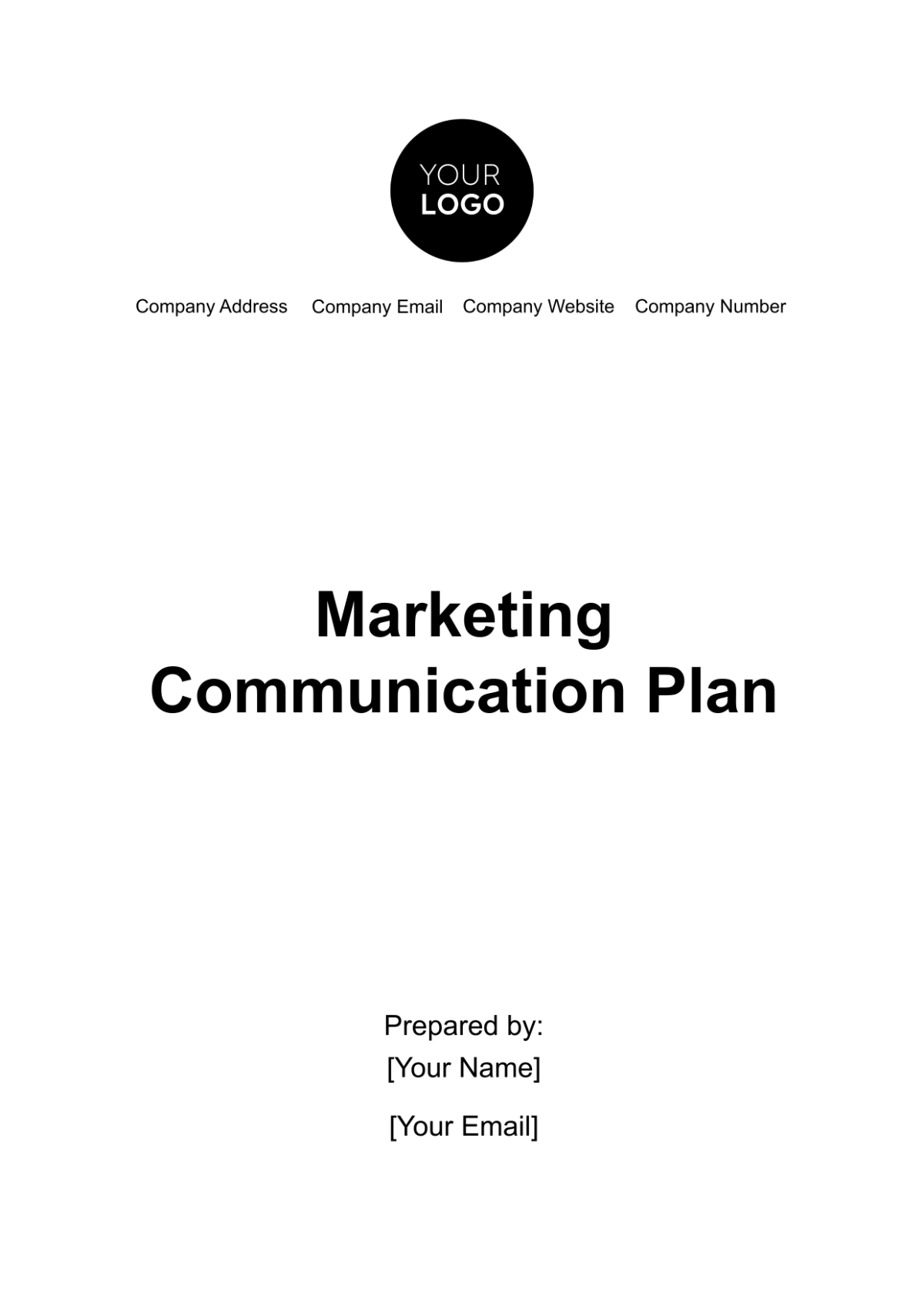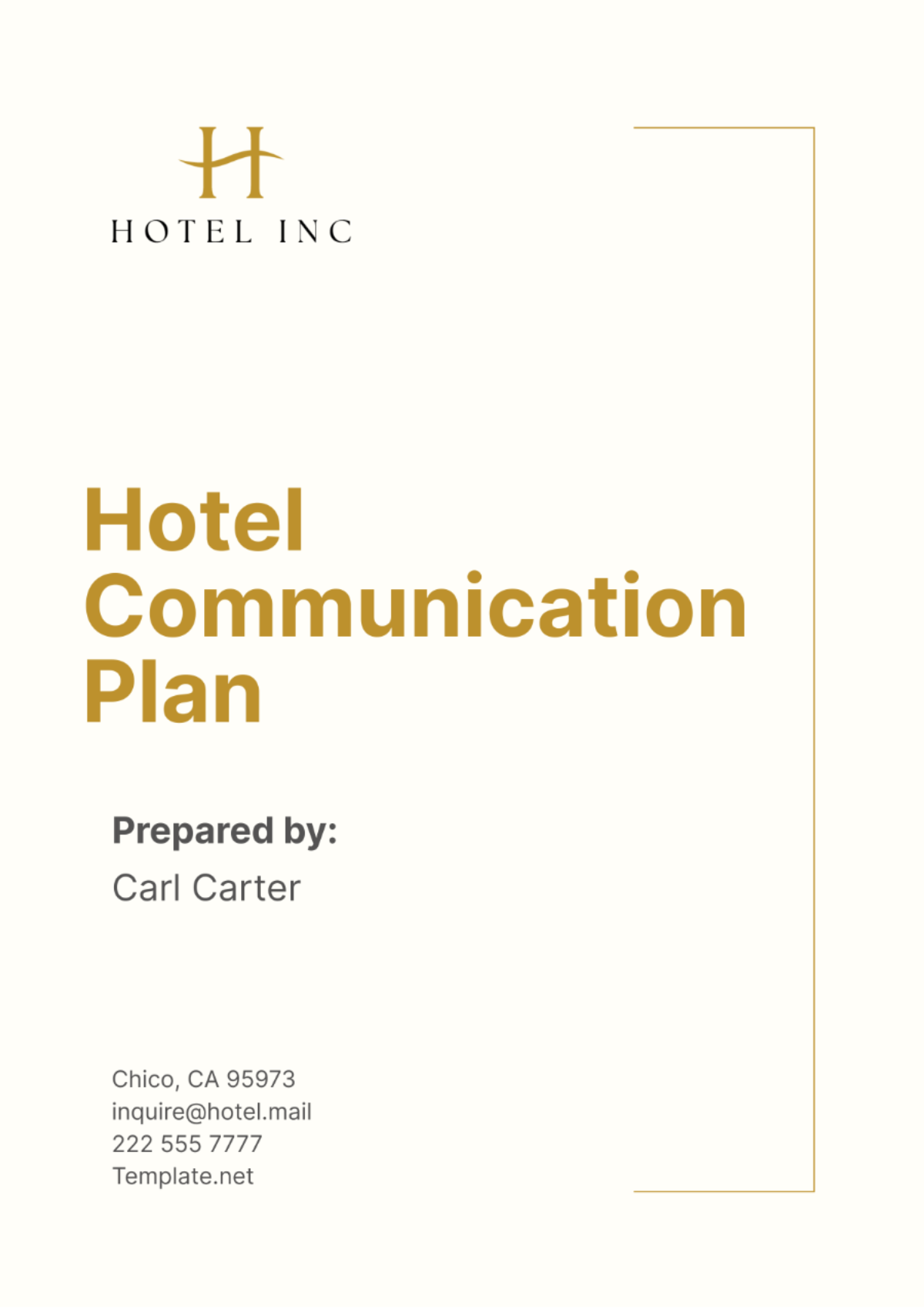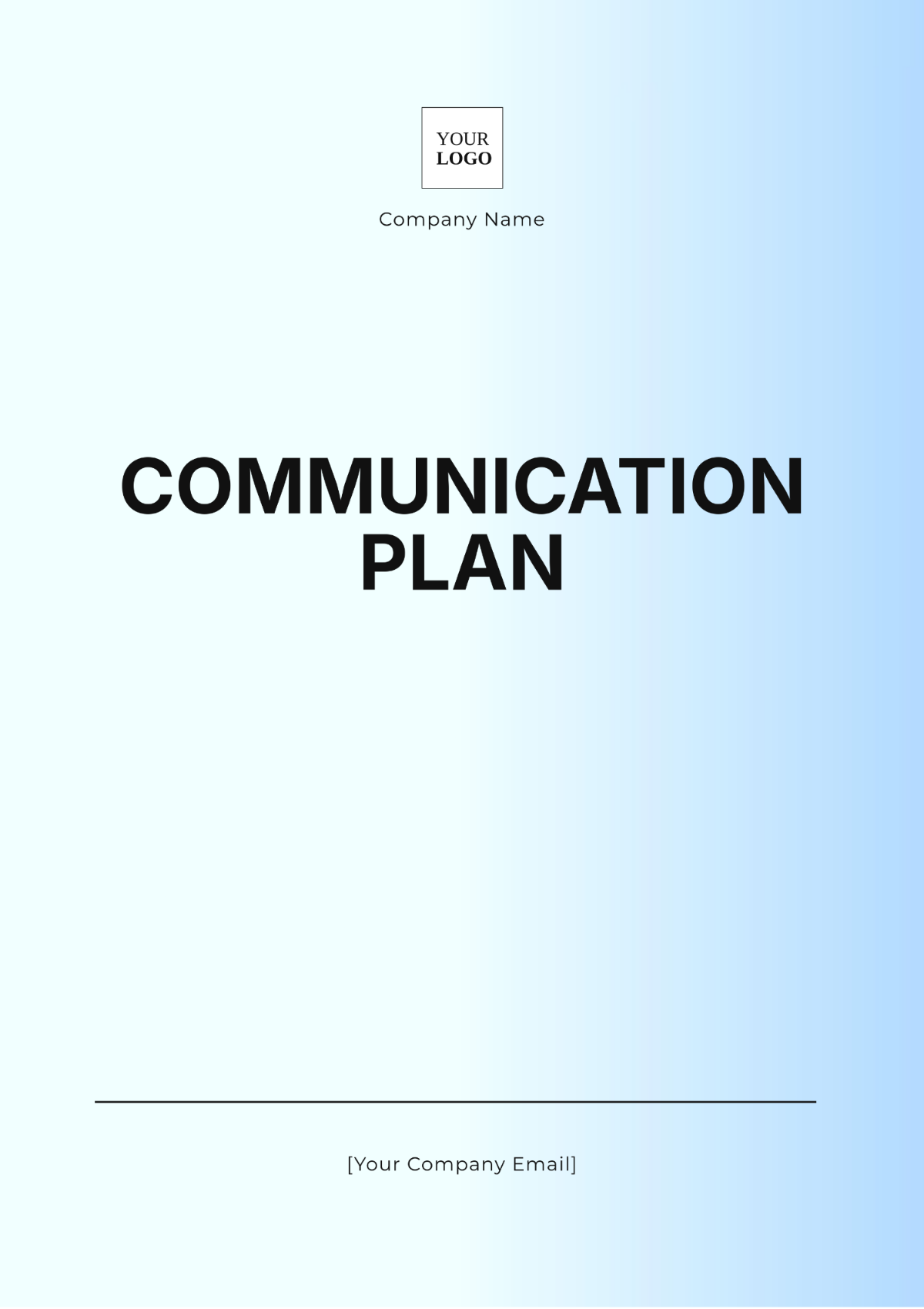Online Learning Communication Plan
1. Introduction
In an increasingly digital world, online learning has become a vital component of educational strategies across various sectors. This Online Learning Communication Plan is designed to outline the methods, strategies, and timelines for communicating information regarding the online learning initiatives at [Your Company Name]. Effective communication is essential as it will ensure that all stakeholders are informed, engaged, and equipped to contribute to the successful implementation of online learning programs. This plan seeks to establish a cohesive communication framework that is aligned with the broader objectives of [Your Company Name].
1.1 Purpose of the Communication Plan
The purpose of this communication plan is to:
Provide a Structured Approach: A systematic framework will guide the dissemination of information, ensuring clarity and consistency. This structured approach allows stakeholders to easily access relevant updates and resources, minimizing confusion and enhancing overall engagement.
Enhance Collaboration: By establishing clear channels of communication, we aim to foster collaboration among stakeholders, including students, faculty, administrative staff, and technical support teams. This collaborative environment encourages sharing of ideas, best practices, and resources, which can lead to improved outcomes for online learning initiatives.
Ensure Clarity and Consistency: Consistent messaging related to online learning strategies, tools, and resources is critical. By standardizing our communication, we can avoid mixed messages that might confuse stakeholders. This will also ensure that all parties are on the same page regarding expectations, timelines, and available resources.
Foster an Environment of Transparency: Transparency is key to building trust among stakeholders. This communication plan encourages open dialogue, enabling stakeholders to provide feedback and ask questions. By doing so, we can address concerns promptly and make necessary adjustments to our strategies.
1.2 Scope
This communication plan encompasses:
Internal Communications: These communications focus on faculty, staff, and administration, ensuring that everyone involved in the implementation of online learning is informed about policies, procedures, and best practices.
External Communications: Directed at students and prospective learners, these communications aim to provide information about course offerings, enrollment processes, and resources available to support their online learning experience.
Training and Support Resources: This includes creating and distributing materials that help stakeholders navigate online learning platforms effectively. Training sessions, guides, and tutorials will be integral to this support effort.
Updates and Feedback Mechanisms: Regular updates on progress, changes, and upcoming events will be communicated, alongside structured mechanisms for stakeholders to provide feedback on their experiences and suggestions for improvement.
2. Stakeholders
Identifying and understanding the stakeholders involved in online learning initiatives is crucial for effective communication. The following table outlines the primary stakeholders, their roles, and the communication methods to be used. It is essential to recognize that each stakeholder group has unique needs and preferences that must be addressed in our communication strategies.
Stakeholder | Role | Communication Method |
|---|---|---|
Faculty | Instructors and course developers | Emails, newsletters, workshops |
Students | Learners enrolled in online courses | LMS notifications, emails |
Administrative Staff | Support services and administrative oversight | Meetings, memos, emails |
Technical Support Team | IT support and system maintenance | Tickets, emails, training sessions |
Marketing Team | Promotion and outreach for online courses | Social media, newsletters |
2.1 Detailed Stakeholder Analysis
2.1.1 Faculty
Faculty members are crucial in developing and delivering online courses. They require timely updates on training, technical resources, and curriculum development to ensure they can provide the best possible learning experiences.
Communication Needs: Regular updates on online learning tools, teaching strategies, and technology enhancements are critical for faculty to adapt their teaching methods effectively. Faculty should also receive insights on student engagement metrics to tailor their approaches to meet learner needs.
Preferred Channels: Faculty meetings, webinars, and dedicated email lists serve as effective communication channels. A dedicated online forum for faculty members can also facilitate discussions and share resources.
2.1.2 Students
Students are the primary beneficiaries of online learning initiatives. Their experience and satisfaction are critical for the success of these programs.
Communication Needs: Information on course offerings, deadlines, technical support, and academic resources is essential. Additionally, students should have access to mentorship opportunities and platforms for peer collaboration, which can enhance their learning experience.
Preferred Channels: Learning Management System (LMS) notifications, direct emails, and social media platforms are effective for reaching students. Incorporating gamified elements or interactive elements in communication can also increase engagement.
2.1.3 Administrative Staff
Administrative staff support the logistical aspects of online learning programs, including enrollment, scheduling, and resource allocation.
Communication Needs: Updates on policies, procedures, and training resources are necessary for administrative staff to perform their roles effectively. They also require insights into program performance metrics to manage resources efficiently.
Preferred Channels: Internal memos, departmental meetings, and training sessions ensure that administrative staff remain informed about the latest developments and best practices in online learning management.
2.1.4 Technical Support Team
The technical support team ensures the functionality of online learning platforms and provides assistance to users experiencing issues.
Communication Needs: System updates, maintenance schedules, and user feedback are crucial for the technical support team to manage resources effectively. They need to communicate changes proactively to minimize disruptions in service.
Preferred Channels: Helpdesk tickets, internal chats, and training sessions allow for effective communication among team members. Regular updates on system performance and user feedback should also be shared with faculty and administration to maintain transparency.
2.1.5 Marketing Team
The marketing team plays a vital role in promoting online learning courses to attract new students and retain existing ones.
Communication Needs: Updates on course availability, success stories, and marketing materials are essential for promoting online courses effectively. The marketing team should also be informed about student feedback and performance metrics to refine their strategies.
Preferred Channels: Social media, newsletters, and promotional events serve as effective platforms for reaching potential students and engaging with the wider community. Collaborative campaigns with faculty can enhance the visibility of new courses and initiatives.
3. Communication Objectives
The communication objectives outlined in this plan will guide the strategies and tactics employed to achieve effective communication. Each objective is critical in ensuring that stakeholders remain informed and engaged throughout the online learning process.
3.1 Increase Awareness
Objective: Enhance awareness of online learning programs among all stakeholders to ensure they are fully informed about available resources and opportunities. This includes increasing familiarity with the technology, course content, and support services available.
Strategy: Develop targeted communication campaigns utilizing various channels, such as newsletters, social media, and direct outreach to specific groups, to reach different stakeholder groups effectively. Engaging visuals, testimonials, and success stories can be powerful tools in these campaigns.
3.2 Foster Engagement
Objective: Encourage active participation and feedback from stakeholders to create a sense of ownership and community around online learning initiatives. Engaged stakeholders are more likely to contribute positively to the program and support its objectives.
Strategy: Implement interactive webinars, surveys, and discussion forums to gather input and facilitate dialogue. Utilizing gamification techniques to encourage participation can further enhance engagement levels. Hosting community events or challenges related to online learning can also foster a collaborative spirit.
3.3 Provide Support
Objective: Ensure stakeholders have access to necessary resources and support, enabling them to navigate online learning platforms and overcome challenges they may encounter.
Strategy: Create a comprehensive online support center with FAQs, tutorials, and contact information for support teams. Additionally, hosting regular training sessions and providing ongoing technical support will be essential in empowering users to leverage online learning effectively.
3.4 Monitor and Evaluate
Objective: Continuously assess the effectiveness of communication efforts to identify successes and areas for improvement. Ongoing evaluation ensures that communication strategies remain relevant and impactful.
Strategy: Regularly collect and analyze feedback from stakeholders through surveys and focus groups to identify areas for improvement. Establishing benchmarks and metrics to assess communication effectiveness will help guide future initiatives and adaptations.
4. Communication Channels
A variety of communication channels will be utilized to ensure messages reach all stakeholders effectively. Each channel has distinct advantages and will be chosen based on the target audience and content. Using a multi-channel approach will enhance overall reach and effectiveness.
4.1 Email
Description: A primary communication tool for disseminating information to faculty and administrative staff. Email provides a reliable method for sharing important updates and announcements.
Frequency: Weekly newsletters, bi-weekly updates, and ad-hoc announcements will keep stakeholders informed. Consistent timing can help stakeholders anticipate communications.
Content: Program updates, training opportunities, and important dates will be communicated through email. The content should be concise, well-structured, and highlight key takeaways to ensure clarity.
4.2 Learning Management System (LMS)
Description: The central hub for student engagement and course delivery. The LMS serves as the primary platform for students to access course materials and communicate with instructors.
Frequency: Daily announcements and updates as needed. Regular postings will help maintain engagement and ensure students are aware of any changes.
Content: Course materials, schedules, and assessment information will be made available through the LMS. Interactive elements such as discussion boards and live chats can further enhance the learning experience.
4.3 Webinars
Description: Live sessions for training and Q&A, allowing stakeholders to engage in real-time discussions and receive immediate feedback. Webinars can facilitate knowledge sharing and collaboration.
Frequency: Monthly webinars for faculty and quarterly sessions for students, ensuring that everyone has the opportunity to participate in discussions and learn from experts.
Content: Topics may include best practices for online teaching, technology demonstrations, and feedback sessions. Recordings of webinars should be made available for later viewing to accommodate different schedules.
4.4 Social Media
Description: A tool for engaging with the broader community and promoting online learning initiatives. Social media can help build excitement and awareness around online learning offerings.
Frequency: Daily or weekly updates to maintain a consistent presence. Timely engagement with followers can help build a community around online learning.
Content: Highlight student success stories, promote upcoming courses, and share useful resources. Visual content, such as videos and infographics, can enhance engagement and reach.
4.5 Internal Meetings
Description: Regular meetings with faculty and administrative staff to discuss ongoing initiatives, share updates, and gather feedback.
Frequency: Bi-weekly or monthly meetings, depending on the urgency of the topics being discussed. Ensuring a structured agenda will help maximize the effectiveness of these meetings.
Content: Updates on program performance, discussions on challenges, and collaborative problem-solving will be the primary focus of these meetings.
5. Communication Schedule
The following communication schedule outlines the frequency and type of communications planned over the next [3] years. This structured timeline ensures that stakeholders receive timely information and can participate actively in the online learning initiatives.
Communication Type | Frequency | Target Audience | Purpose |
|---|---|---|---|
Weekly Newsletters | Weekly | Faculty, Administrative Staff | Updates on initiatives, key dates, and resources |
Bi-weekly Training Sessions | Every [2] weeks | Faculty | Skill development, tool usage, best practices |
Monthly Webinars | Monthly | Faculty, Students | Live discussions, training, and Q&A |
Daily LMS Notifications | Daily | Students | Course updates, announcements, deadlines |
Quarterly Feedback Surveys | Quarterly | All Stakeholders | Gather feedback on online learning experience |
Social Media Posts | Daily/Weekly | General Public, Students | Promote courses, engage community |
6. Key Messages
The key messages that will be communicated to stakeholders are critical for ensuring consistency and clarity throughout all communication efforts. These messages should reflect the values and objectives of [Your Company Name] and align with the broader vision for online learning.
6.1 For Faculty
Message: "Empower your teaching with innovative tools and resources to enhance the online learning experience for your students."
Rationale: This message emphasizes the importance of continuous development and encourages faculty to embrace new technologies that can enhance their teaching methods.
6.2 For Students
Message: "Unlock your potential with engaging and flexible online learning opportunities tailored to your needs."
Rationale: This message highlights the benefits of online learning, emphasizing flexibility and personalized learning experiences that cater to diverse learning styles and needs.
6.3 For Administrative Staff
Message: "Support our online learning initiatives by staying informed and equipped to assist students and faculty effectively."
Rationale: This message stresses the importance of administrative staff's role in facilitating smooth operations and support services.
6.4 For Technical Support Team
Message: "Be the backbone of our online learning initiatives by providing timely and effective support to all users."
Rationale: This message reinforces the crucial role of technical support in maintaining the functionality and reliability of online learning platforms.
6.5 For Marketing Team
Message: "Promote our online learning offerings and engage the community to attract and retain students."
Rationale: This message highlights the importance of marketing efforts in promoting courses and engaging potential learners.
7. Measurement and Evaluation
Measuring the effectiveness of communication strategies is essential for continuous improvement and ensuring that objectives are met. The following key performance indicators (KPIs) will be used to assess the impact of our communication efforts.
7.1 Key Performance Indicators (KPIs)
KPI | Measurement Method | Target |
|---|---|---|
Engagement Rates | Tracking email open and click-through rates | [50]% increase annually |
Feedback Response Rates | Analyzing survey responses | [75]% response rate |
Attendance at Webinars | Monitoring participant numbers | [100] participants per session |
Social Media Engagement | Tracking likes, shares, and comments | [30]% increase annually |
LMS Usage Statistics | Analyzing logins and course completions | [25]% increase annually |
7.2 Data Collection Methods
To gather data for evaluation, the following methods will be employed:
Surveys: Regularly distributed to gather feedback from faculty, students, and staff regarding their experiences with communication and online learning. Surveys should be concise, focusing on specific areas for improvement and user satisfaction.
Analytics Tools: Utilizing analytics from email platforms and social media to track engagement metrics. These tools can provide insights into which messages resonate most with audiences, guiding future communication strategies.
LMS Reports: Collecting data on student engagement, course completions, and activity levels within the LMS. This data can help identify trends in user engagement and inform strategies for improvement.
8. Review and Updates
The Online Learning Communication Plan is a dynamic document that requires regular reviews and updates to remain relevant. The following processes will be established to ensure the plan evolves with stakeholder needs and technological advancements.
8.1 Scheduled Reviews
Review Frequency: The communication plan will be reviewed on an annual basis. This review will involve key stakeholders from faculty, administration, and the technical support team to gather comprehensive feedback.
Review Process: During the review, the effectiveness of current communication strategies will be assessed against KPIs. Feedback from surveys and stakeholder discussions will be analyzed to identify areas for improvement.
8.2 Stakeholder Feedback
Gathering feedback from stakeholders will be an ongoing process. Methods for collecting feedback will include:
Focus Groups: Organizing focus groups with representatives from each stakeholder group to discuss their experiences and suggestions for improvement.
Feedback Surveys: Administering surveys after key events, such as webinars and training sessions, to gather insights on effectiveness and areas for improvement.
8.3 Continuous Improvement
The communication plan will be continually refined based on stakeholder feedback and changing circumstances. Continuous improvement practices will include:
Adapting Strategies: Implementing changes based on feedback from stakeholders to enhance communication effectiveness. This may involve adjusting messaging, communication channels, or frequency of updates.
Incorporating Technology: Staying abreast of emerging technologies and trends in online learning and communication to ensure the plan remains current and effective.
Regular Updates: Keeping all stakeholders informed about changes to the communication plan and any new developments in online learning. Regular communication regarding updates will promote transparency and trust.
9. Conclusion
The Online Learning Communication Plan for [Your Company Name] is a comprehensive framework designed to enhance the effectiveness of our online learning initiatives through structured, clear, and engaging communication strategies. By fostering a collaborative environment among all stakeholders, we can ensure that our online learning programs are successful, beneficial, and continuously evolving to meet the needs of our community.
Effective communication is not merely about sharing information; it is about inspiring and engaging our stakeholders to actively participate in the growth of online learning. This plan serves as a roadmap for our communication efforts, guiding us to remain focused on our objectives and responsive to the needs of our audience in the years to come.
By prioritizing communication and engagement, [Your Company Name] will create a vibrant online learning community that empowers learners and educators alike. Together, we can build an innovative and responsive educational environment that meets the challenges of the future and supports the lifelong learning journey of our community.






















